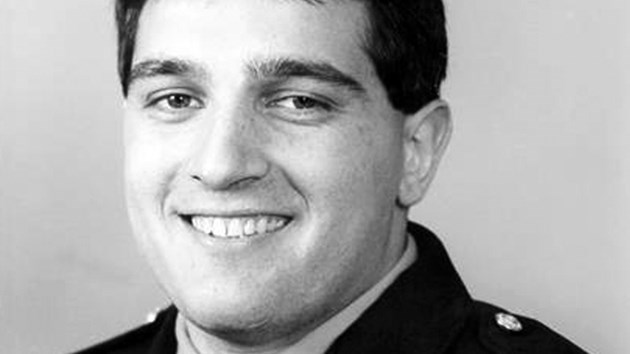Clinton Suzack, one of two men convicted in the 1993 murder of Sudbury Police Const. Joe MacDonald, has applied for day parole.
Suzack, who MacDonald managed to shoot during the incident, was found guilty of first-degree murder along with accomplice Peter Pennett. Both were sentenced to 25 years in prison with no chance of parole.
MacDonald, 29, was beaten, pistol whipped and shot to death on Oct. 7, 1993, in a crime that shocked the community and led to improved communications and equipment for police, among other changes.
Holly Knowles, regional manager of the Parole Board of Canada's Ontario office, confirmed Suzack had applied for day parole, which is one step away from full parole.
Day parole involves closer monitoring of convicts, and usually they live in a halfway house for a period of time under a number of restrictions.
“Day parole is a more structured form of release and it is a way for the offender to reintegrate gradually,” Knowles said. “Research and experience has shown that a very gradual, structured release contributes to the safe and successful reintegration of offenders.”
But to qualify, the parole board has to be satisfied that day parole wouldn't present an undue risk to the community, and under legislation, offenders must serve a certain amount of their sentence before applying.
In Suzack's case, he was eligible to apply for day parole in 2015, and for full parole in 2018. But eligibility doesn't mean they will automatically be released, she said.
“Public safety is always the paramount consideration in all Parole Board of Canada decisions, understanding, of course, that ultimately offenders should be expected to gradually reintegrate back into society in a timely way,” Knowles said. “In the case of offenders who have very serious offenses ... that is also of course taken into serious consideration – the harm that the offender has done.”
The parole board gets input from victims and police, and makes a decision based on three broad factors: Is the offender at a high risk of committing another offence? What harm would be caused if another offence was committed? And whether there's a reasonable plan in place to monitor the offender if day parole is granted.
“The board members have to determine whether the offender presents an undue risk to society,” Knowles said. “And what harm would come to society if the offender did re-offend?
“They get all kinds of information from a variety of sources, that includes victims, that includes the courts, that includes police, that includes correctional authorities, psychology reports psychiatric reports, those kinds of things. And then they would also look at the conditions that would be necessary for the offender in order to be safely managed.”
The hearing process is open and transparent, she said, and the public can apply to receive a full copy of the decision. However, for safety reasons, they don't release information about the date of the hearing ahead of time, unless someone applies to be at the hearing in person.
“So we don't provide dates of hearings in advance unless unless a hearing is actually confirmed, and you have requested to observe the hearing,” she said.
But board members are made aware of the application several months beforehand, giving them time to review reports and request more information well ahead of the hearing.
